Tutorial: Configure Tableau Cloud for automatic user provisioning
This tutorial describes the steps you need to do in both Tableau Cloud and Microsoft Entra ID to configure automatic user provisioning. When configured, Microsoft Entra ID automatically provisions and de-provisions users and groups to Tableau Cloud using the Microsoft Entra provisioning service. For important details on what this service does, how it works, and frequently asked questions, see Automate user provisioning and deprovisioning to SaaS applications with Microsoft Entra ID.
Capabilities supported
- Create users in Tableau Cloud.
- Remove users in Tableau Cloud when they do not require access anymore.
- Keep user attributes synchronized between Microsoft Entra ID and Tableau Cloud.
- Provision groups and group memberships in Tableau Cloud.
- Single sign-on to Tableau Cloud (recommended).
Prerequisites
The scenario outlined in this tutorial assumes that you already have the following prerequisites:
- A Microsoft Entra tenant
- One of the following roles: Application Administrator, Cloud Application Administrator, or Application Owner.
- A Tableau Cloud tenant.
- A user account in Tableau Cloud with Admin permission
Note
The Microsoft Entra provisioning integration relies on the Tableau Cloud REST API. This API is available to Tableau Cloud developers.
Step 1: Plan your provisioning deployment
- Learn about how the provisioning service works.
- Determine who will be in scope for provisioning.
- Determine what data to map between Microsoft Entra ID and Tableau Cloud.
Step 2: Configure Tableau Cloud to support provisioning with Microsoft Entra ID
Use the following steps to enable SCIM support with Microsoft Entra ID:
The SCIM functionality requires that you configure your site to support SAML single sign-on. If you have not done this yet, complete the following sections in Configure SAML with Microsoft Entra ID:
- Step 1: Open the Tableau Cloud SAML Settings.
- Step 2: Add Tableau Cloud to your Microsoft Entra applications.
Note
If you don’t set up SAML single sign-on, your user will be unable to sign into Tableau Cloud after they have been provisioned unless you manually change the user’s authentication method from SAML to Tableau or Tableau MFA in Tableau Cloud.
In Tableau Cloud, navigate to Settings > Authentication page, then under Automatic Provisioning and Group Synchronization (SCIM), select the Enable SCIM check box. This populates the Base URL and Secret boxes with values you will use in the SCIM configuration of your IdP.
Note
The secret token is displayed only immediately after it is generated. If you lose it before you can apply it to Microsoft Entra ID, you can select Generate New Secret. In addition, the secret token is tied to the Tableau Cloud user account of the site administrator who enables SCIM support. If that user’s site role changes or the user is removed from the site, the secret token becomes invalid, and another site administrator must generate a new secret token and apply it to Microsoft Entra ID.
Step 3: Add Tableau Cloud from the Microsoft Entra application gallery
Add Tableau Cloud from the Microsoft Entra application gallery to start managing provisioning to Tableau Cloud. If you have previously setup Tableau Cloud for SSO, you can use the same application. However it's recommended you create a separate app when testing out the integration initially. Learn more about adding an application from the gallery here.
Step 4: Define who will be in scope for provisioning
The Microsoft Entra provisioning service allows you to scope who will be provisioned based on assignment to the application and or based on attributes of the user and group. If you choose to scope who will be provisioned to your app based on assignment, you can use the following steps to assign users and groups to the application. If you choose to scope who will be provisioned based solely on attributes of the user or group, you can use a scoping filter as described here.
Start small. Test with a small set of users and groups before rolling out to everyone. When scope for provisioning is set to assigned users and groups, you can control this by assigning one or two users or groups to the app. When scope is set to all users and groups, you can specify an attribute based scoping filter.
If you need additional roles, you can update the application manifest to add new roles.
Recommendations
Tableau Cloud will only store the highest privileged role that is assigned to a user. In other words, if a user is assigned to two groups, the user’s role will reflect the highest privileged role.
To keep track of role assignments, you can create two purpose-specific groups for role assignments. For example, you can create groups such as Tableau – Creator, and Tableau – Explorer, etc. Assignment would then look like:
- Tableau – Creator: Creator
- Tableau – Explorer: Explorer
- Etc.
Once provisioning is set up, you will want to edit role changes directly in Microsoft Entra ID. Otherwise, you may end up with role inconsistencies between Tableau Cloud and Microsoft Entra ID.
Valid Tableau site role values
On the Select a Role page in your Azure portal, the Tableau Site Role values that are valid include the following: Creator, SiteAdministratorCreator, Explorer, SiteAdministratorExplorer, ExplorerCanPublish, Viewer, or Unlicensed.
If you select a role that is not in the above list, such as a legacy (pre-v2018.1) role, you will experience an error.
Step 5: Configure automatic user provisioning to Tableau Cloud
This section guides you through the steps to configure the Microsoft Entra provisioning service to create, update, and disable users and groups in Tableau Cloud based on user and group assignments in Microsoft Entra ID.
Tip
You must enable SAML-based single sign-on for Tableau Cloud. Follow the instructions in the Tableau Cloud single sign-on tutorial. If SAML isn't enabled, then the user that is provisioned will not be able to sign in.
To configure automatic user provisioning for Tableau Cloud in Microsoft Entra ID:
Sign in to the Microsoft Entra admin center as at least a Cloud Application Administrator.
Browse to Identity > Applications > Enterprise applications
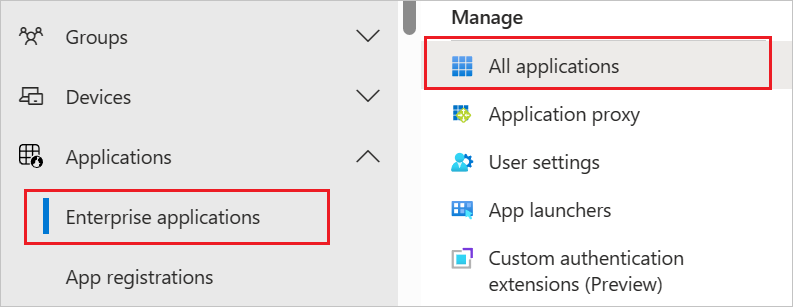
In the applications list, select Tableau Cloud.
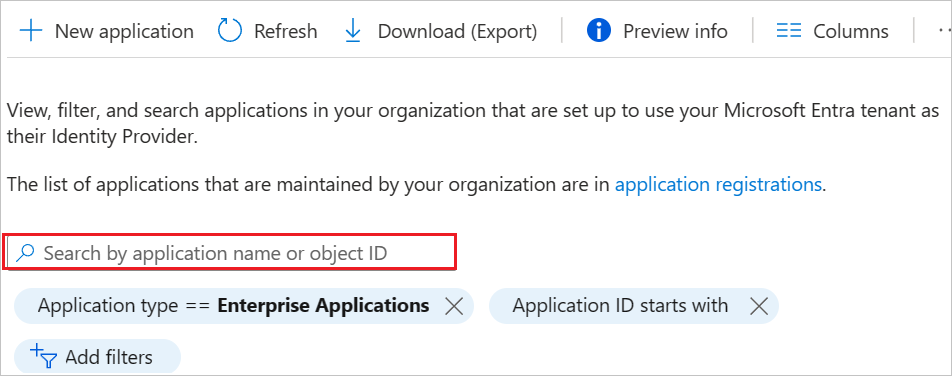
Select the Provisioning tab.

Set the Provisioning Mode to Automatic.

In the Admin Credentials section, input your Tableau Cloud Tenant URL and Secret Token. Click Test Connection to ensure Microsoft Entra ID can connect to Tableau Cloud. If the connection fails, ensure your Tableau Cloud account has Admin permissions and try again.
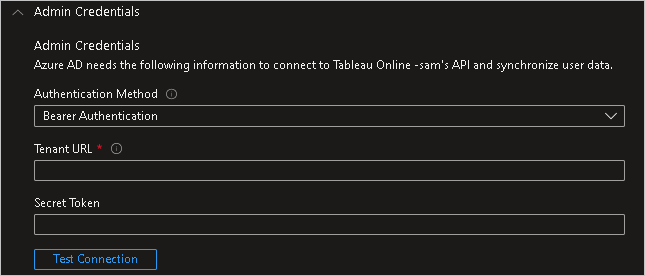
Note
You will have 2 options for your Authentication Method: Bearer Authentication and Basic Authentication. Make sure that you select Bearer Authentication. Basic authentication will not work for the SCIM 2.0 endpoint.
In the Notification Email field, enter the email address of a person or group who should receive the provisioning error notifications and select the Send an email notification when a failure occurs check box.

Select Save.
In the Mappings section, select Synchronize Microsoft Entra users to Tableau Cloud.
Review the user attributes that are synchronized from Microsoft Entra ID to Tableau Cloud in the Attribute-Mapping section. The attributes selected as Matching properties are used to match the user accounts in Tableau Cloud for update operations. If you choose to change the matching target attribute, you'll need to ensure that the Tableau Cloud API supports filtering users based on that attribute. Select the Save button to commit any changes.
Attribute Type Supported for filtering Required by Tableau Cloud userName String ✓ ✓ active Boolean roles String Under the Mappings section, select Synchronize Microsoft Entra groups to Tableau Cloud.
Review the group attributes that are synchronized from Microsoft Entra ID to Tableau Cloud in the Attribute-Mapping section. The attributes selected as Matching properties are used to match the groups in Tableau Cloud for update operations. Select the Save button to commit any changes.
Attribute Type Supported for filtering Required by Tableau Cloud displayName String ✓ members Reference To configure scoping filters, refer to the following instructions provided in the Scoping filter tutorial.
To enable the Microsoft Entra provisioning service for Tableau Cloud, change the Provisioning Status to On in the Settings section.

Define the users and groups that you would like to provision to Tableau Cloud by choosing the desired values in Scope in the Settings section.

When you're ready to provision, click Save.

This operation starts the initial synchronization cycle of all users and groups defined in Scope in the Settings section. The initial cycle takes longer to complete than next cycles, which occur approximately every 40 minutes as long as the Microsoft Entra provisioning service is running.
Update a Tableau Cloud application to use the Tableau Cloud SCIM 2.0 endpoint
In June 2022, Tableau released a SCIM 2.0 connector. Completing the steps below will update applications configured to use the Tableau API endpoint to the use the SCIM 2.0 endpoint. These steps will remove any customizations previously made to the Tableau Cloud application, including:
- Authentication details (credentials used for provisioning, NOT the credentials used for SSO)
- Scoping filters
- Custom attribute mappings
Note
Be sure to note any changes that have been made to the settings listed above before completing the steps below. Failure to do so will result in the loss of customized settings.
Sign in to the Microsoft Entra admin center as at least a Cloud Application Administrator.
Browse to Identity > Applications > Enterprise applications > Tableau Cloud.
In the Properties section of your new custom app, copy the Object ID.

In a new web browser window, navigate to
https://developer.microsoft.com/graph/graph-explorerand sign in as the administrator for the Microsoft Entra tenant where your app is added.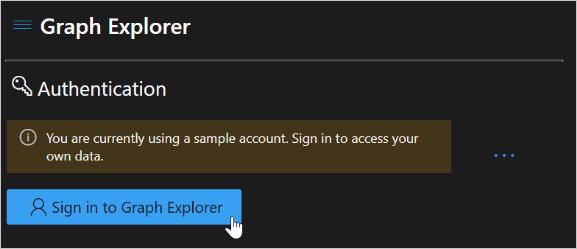
Check to make sure the account being used has the correct permissions. The permission Directory.ReadWrite.All is required to make this change.
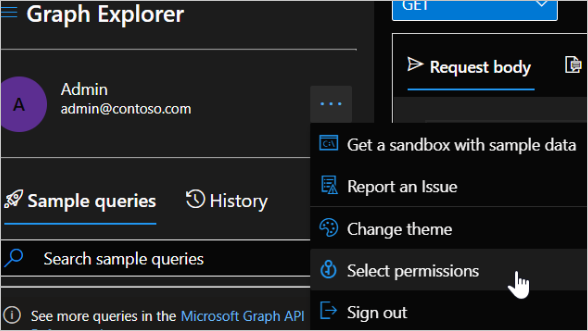

Using the ObjectID selected from the app previously, run the following command:
GET https://graph.microsoft.com/beta/servicePrincipals/[object-id]/synchronization/jobs/Taking the "id" value from the response body of the GET request from above, run the command below, replacing "[job-id]" with the id value from the GET request. The value should have the format of "Tableau.xxxxxxxxxxxxxxx.xxxxxxxxxxxxxxx":
DELETE https://graph.microsoft.com/beta/servicePrincipals/[object-id]/synchronization/jobs/[job-id]In the Graph Explorer, run the command below. Replace "[object-id]" with the service principal ID (object ID) copied from the third step.
POST https://graph.microsoft.com/beta/servicePrincipals/[object-id]/synchronization/jobs { "templateId": "TableauOnlineSCIM" }
Return to the first web browser window and select the Provisioning tab for your application. Your configuration will have been reset. You can confirm the upgrade has taken place by confirming the Job ID starts with TableauOnlineSCIM.
Under the Admin Credentials section, select "Bearer Authentication" as the authentication method and enter the Tenant URL and Secret Token of the Tableau instance you wish to provision to.
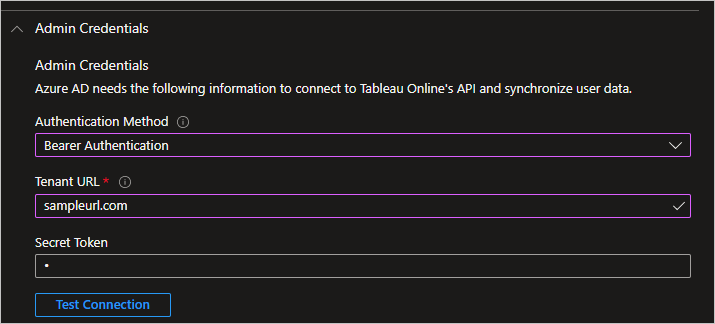
Restore any previous changes you made to the application (Authentication details, Scoping filters, Custom attribute mappings) and re-enable provisioning.
Note
Failure to restore the previous settings may results in attributes (name.formatted for example) updating in Workplace unexpectedly. Be sure to check the configuration before enabling provisioning
Step 6: Monitor your deployment
Once you've configured provisioning, use the following resources to monitor your deployment:
- Use the provisioning logs to determine which users have been provisioned successfully or unsuccessfully
- Check the progress bar to see the status of the provisioning cycle and how close it's to completion
- If the provisioning configuration seems to be in an unhealthy state, the application will go into quarantine. Learn more about quarantine states here.
Change log
- 09/30/2020 - Added support for attribute "authSetting" for Users.
- 06/24/2022 - Updated the ap to be SCIM 2.0 compliant.
More resources
- Managing user account provisioning for Enterprise Apps
- What is application access and single sign-on with Microsoft Entra ID?
Next steps
Feedback
Coming soon: Throughout 2024 we will be phasing out GitHub Issues as the feedback mechanism for content and replacing it with a new feedback system. For more information see: https://aka.ms/ContentUserFeedback.
Submit and view feedback for